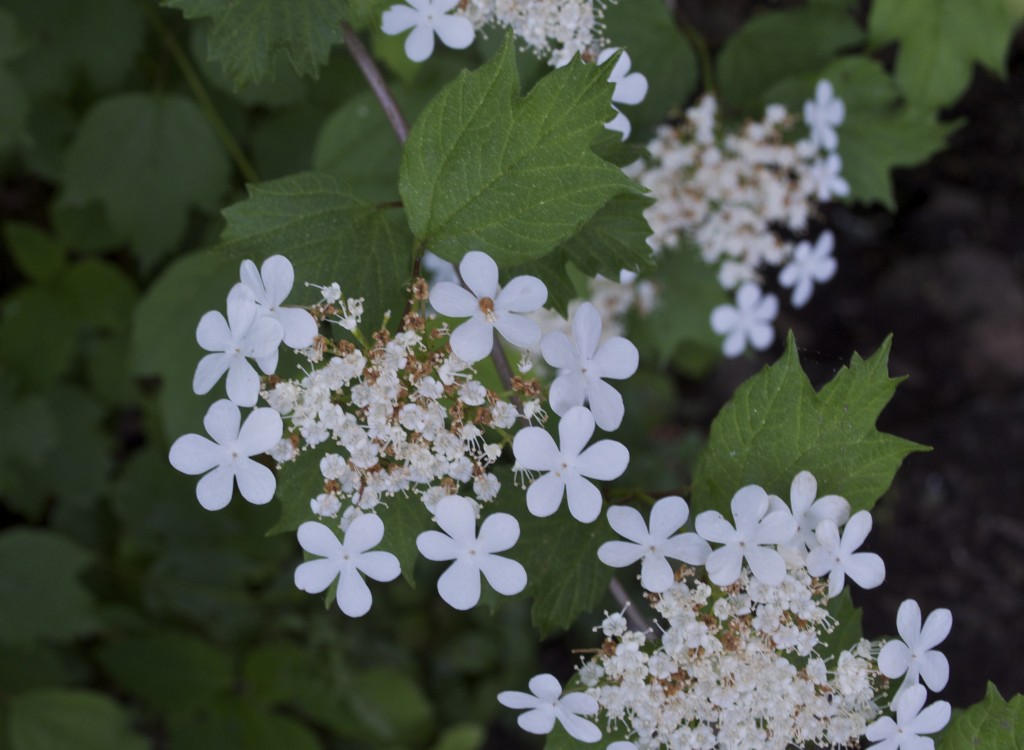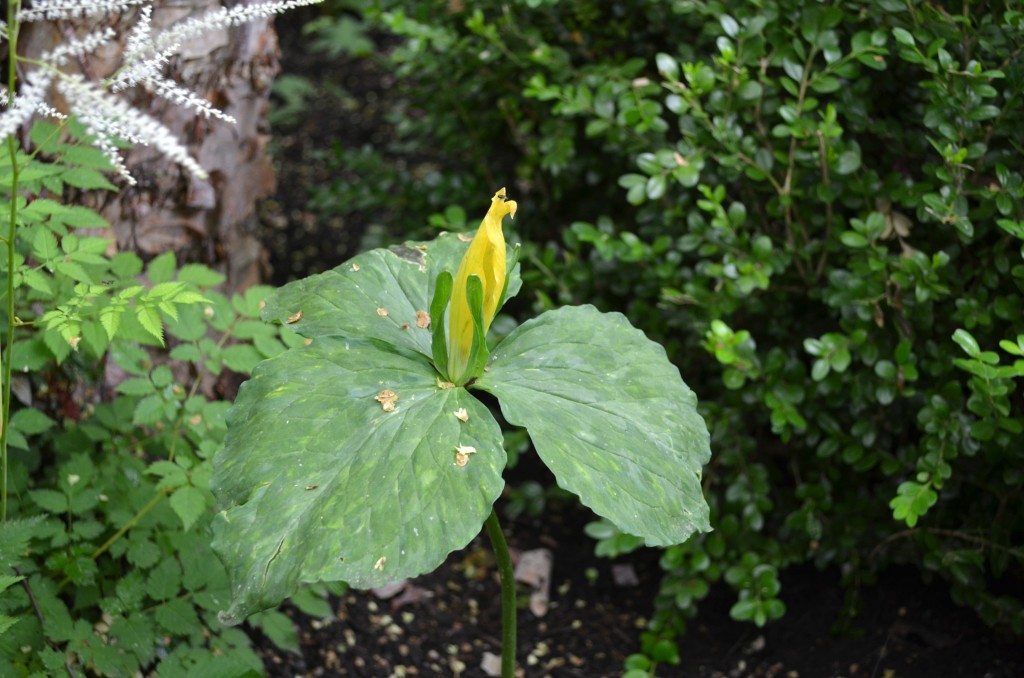
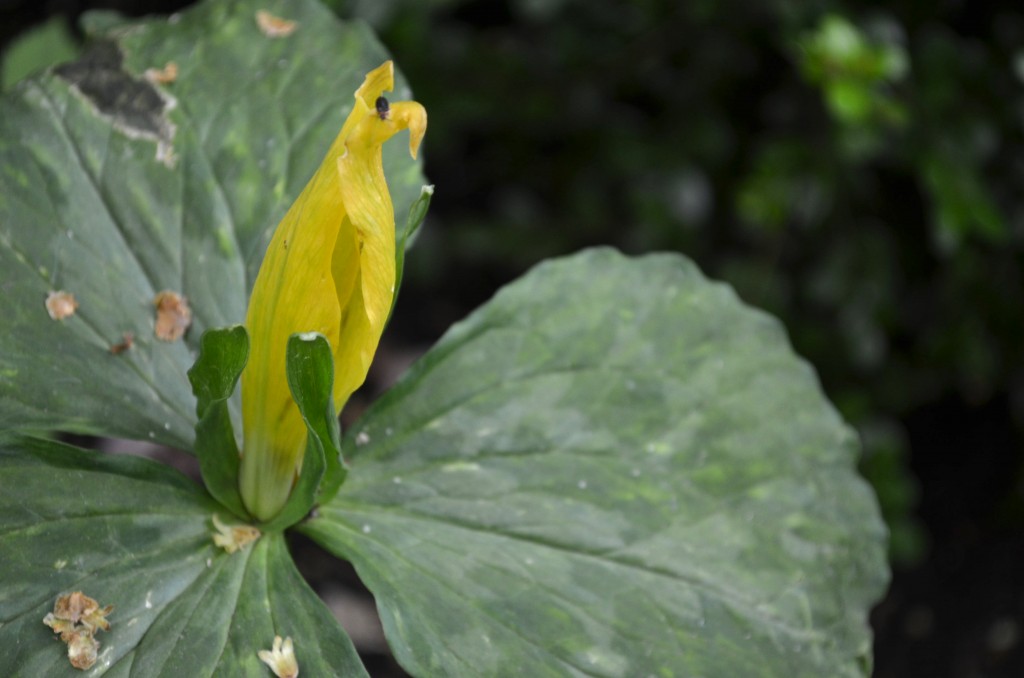
Trillium plants can be divided into two groups: the kind where the flower is on a stem either above the leaves or curving under them (pedicellate) and the kind where the flower arised directly from the leaves with no stem (sessile). These are sessile. They have a lemony fragrance. Lily family. Native to more southern regions, and here, found looking very robust in a woodland garden.
Yellow Trillium (Trillium luteum)

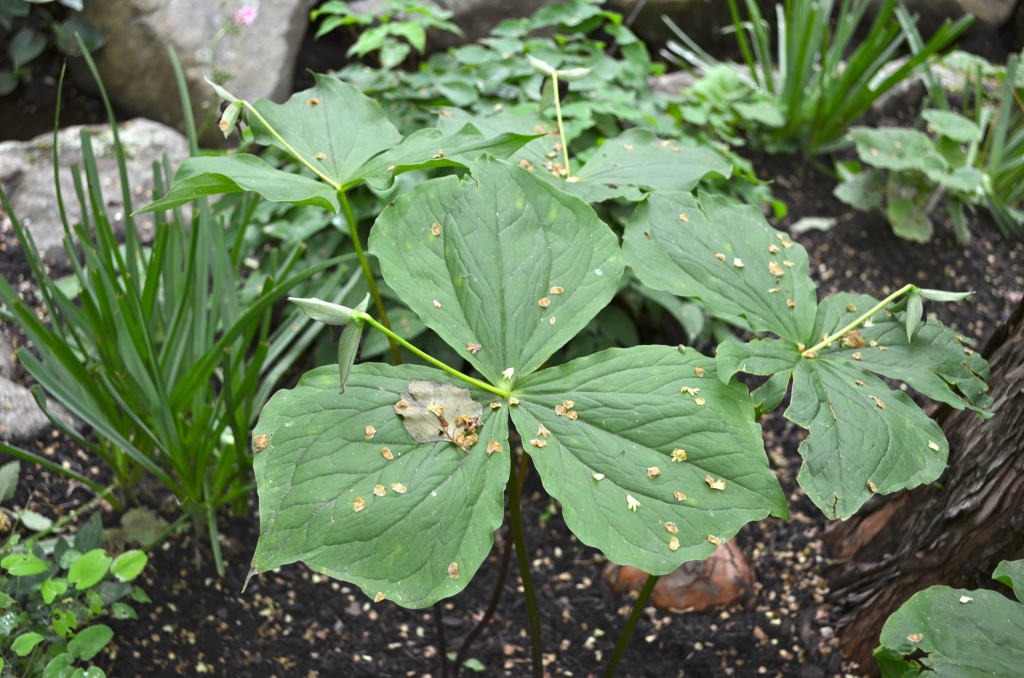
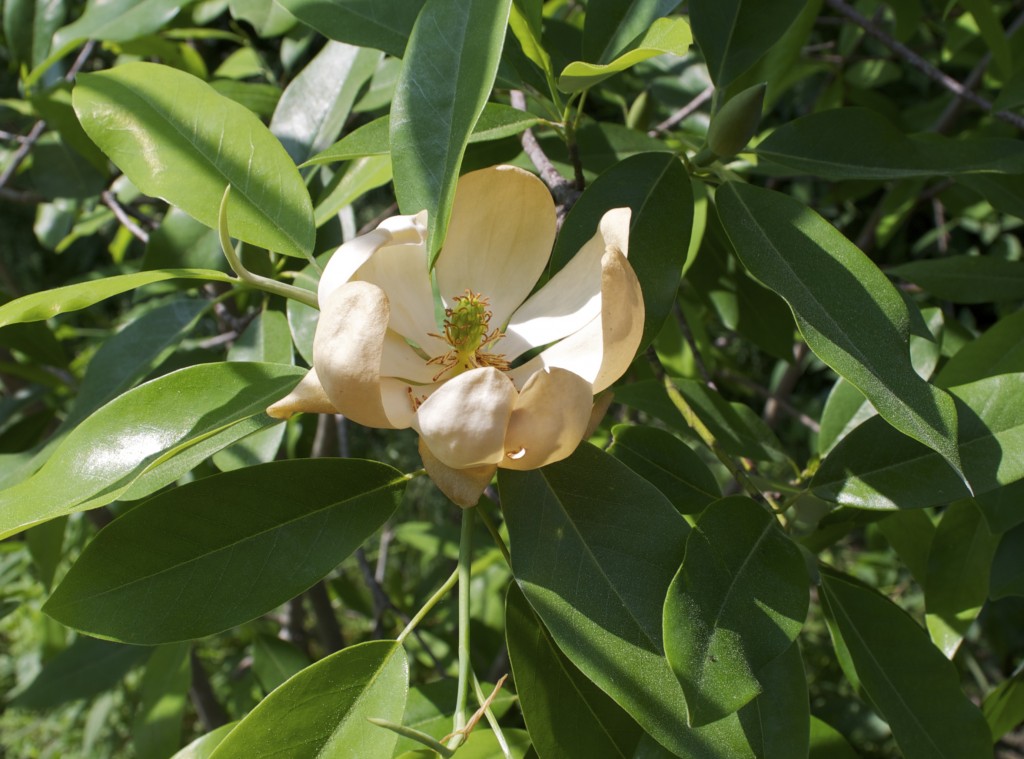
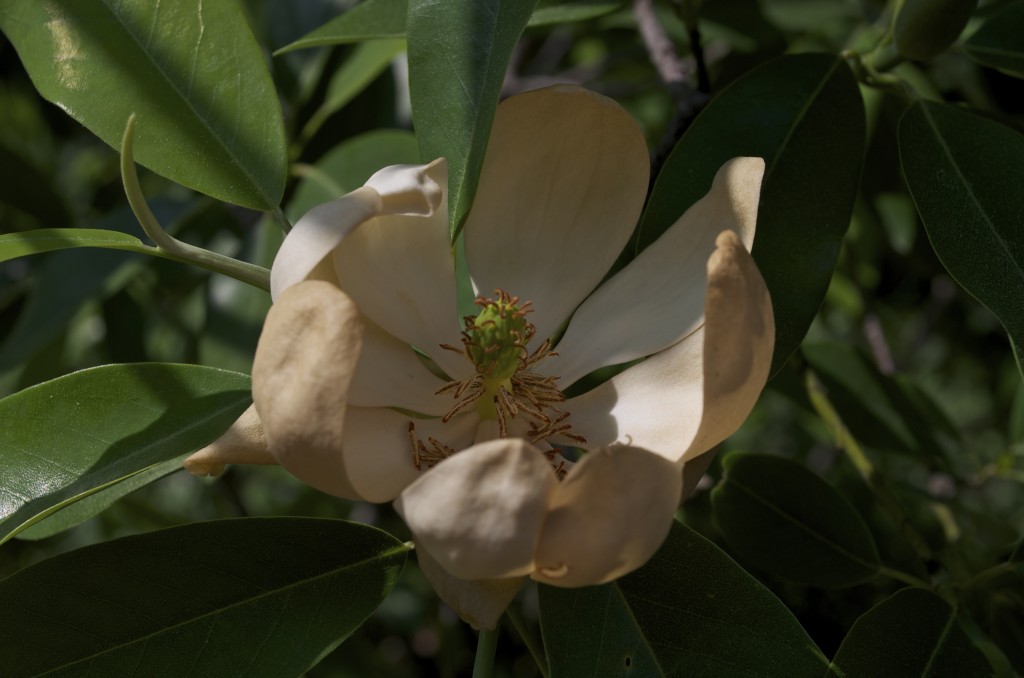
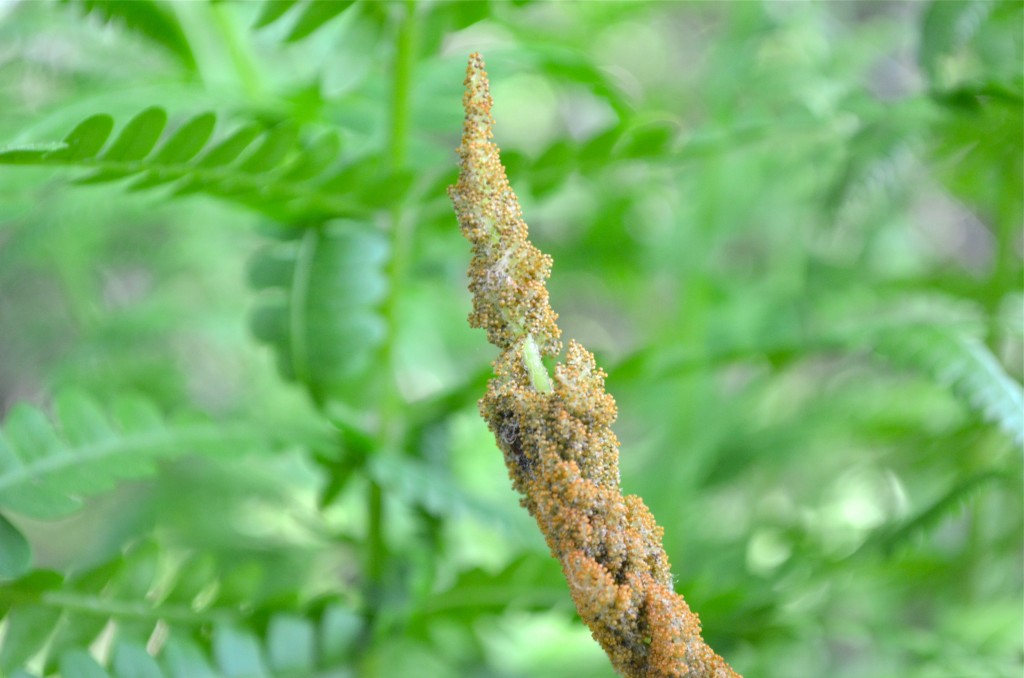
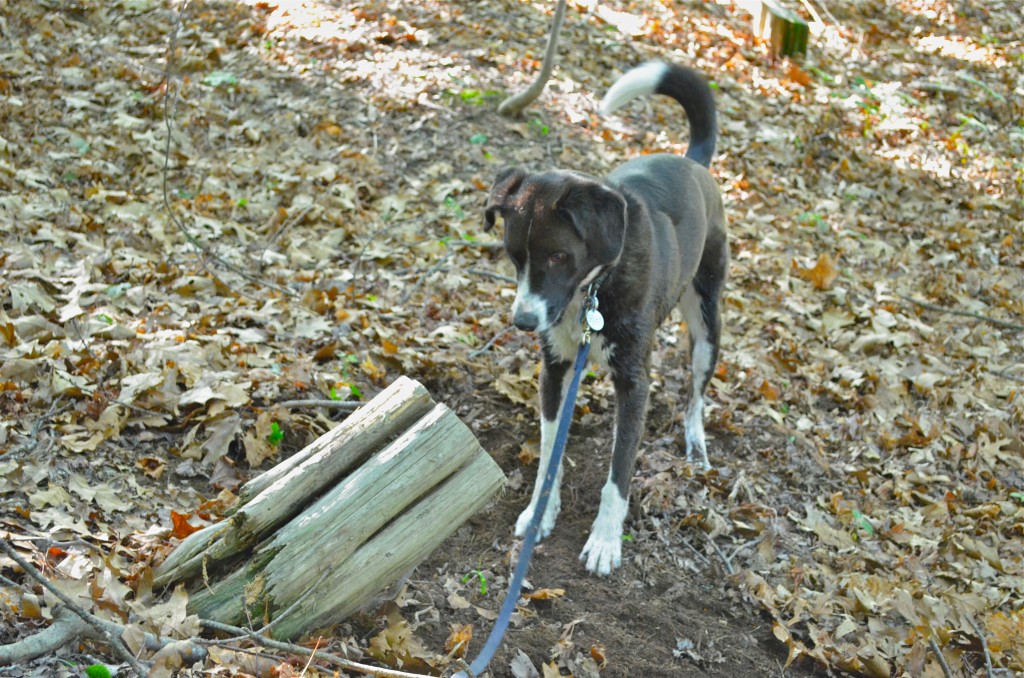
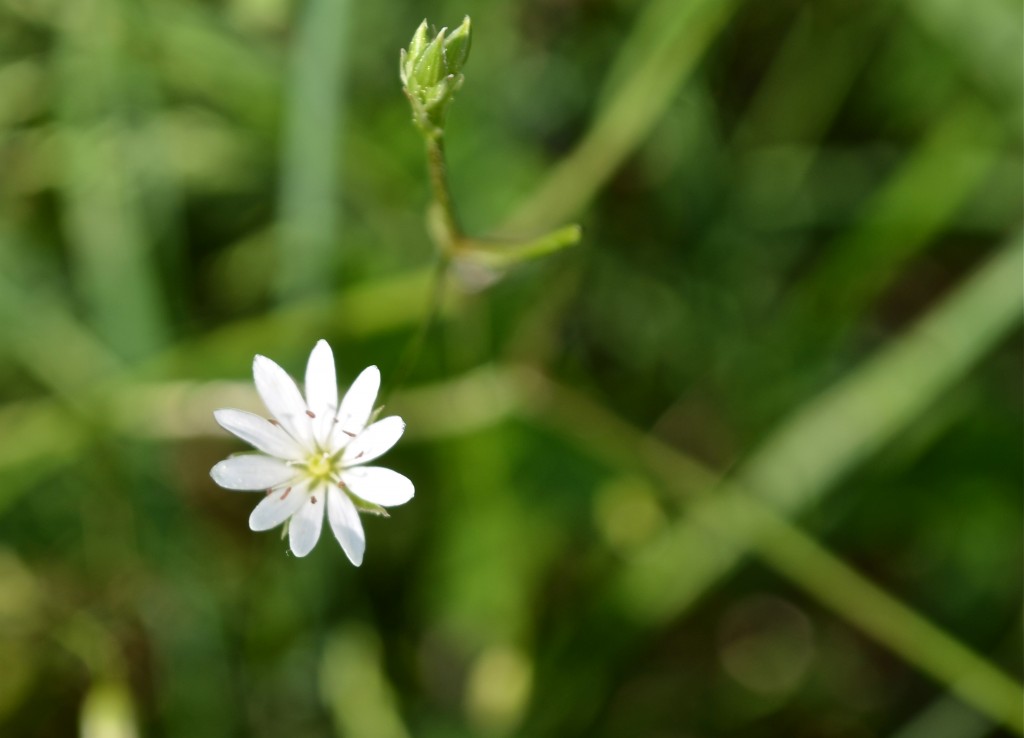
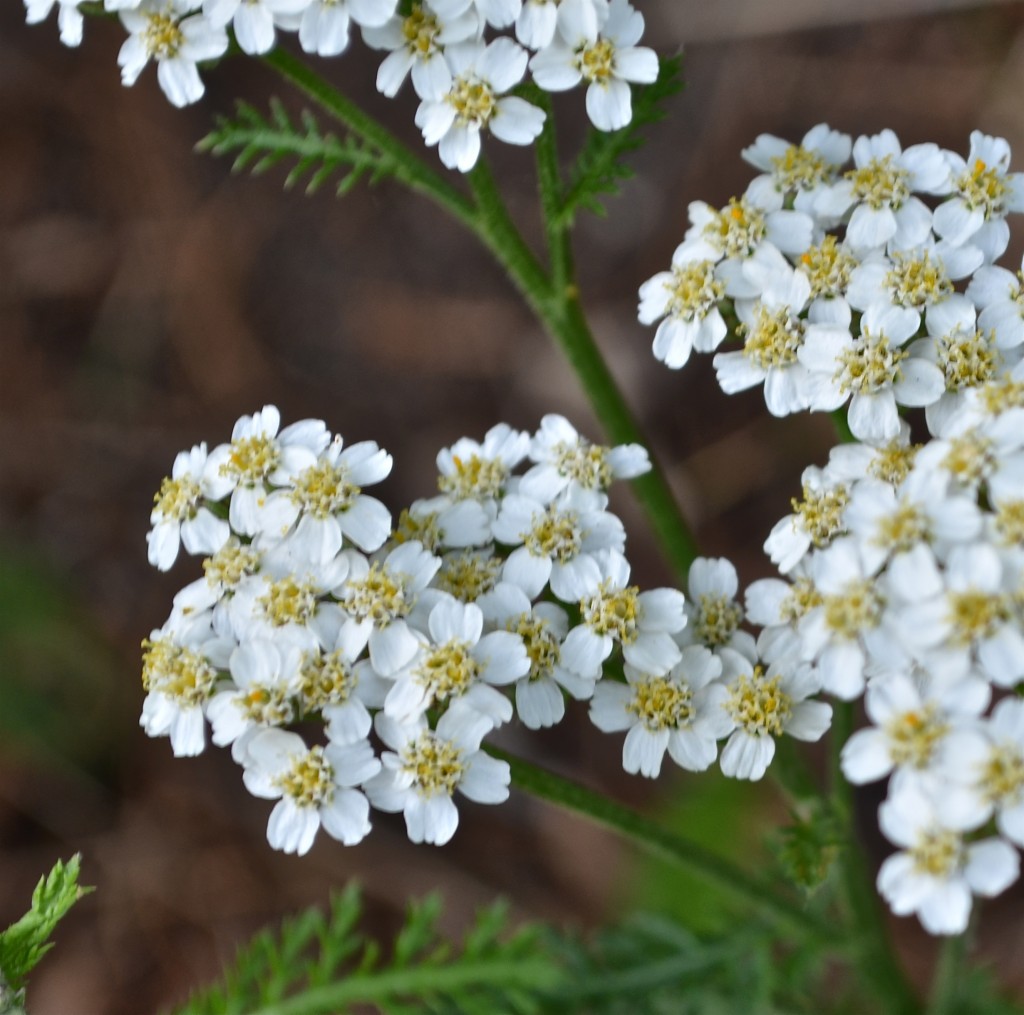
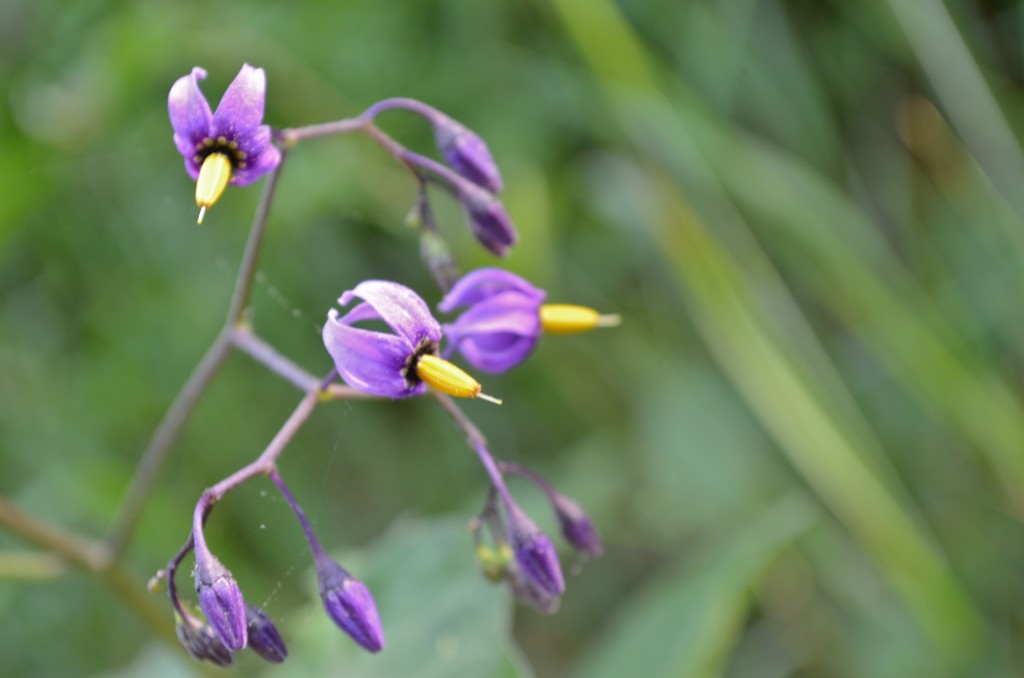
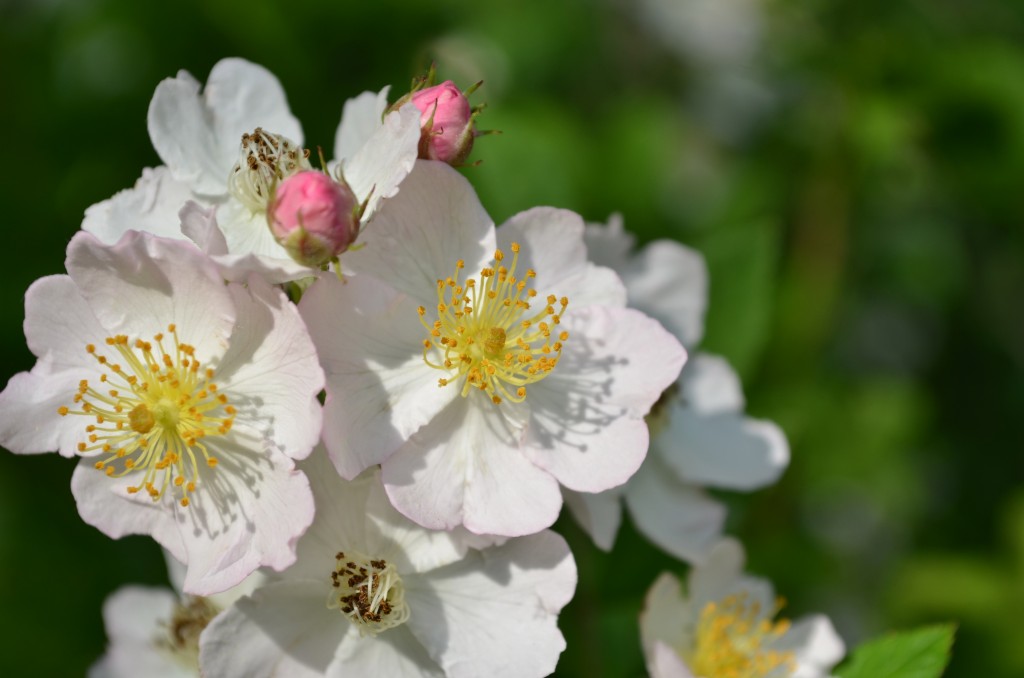
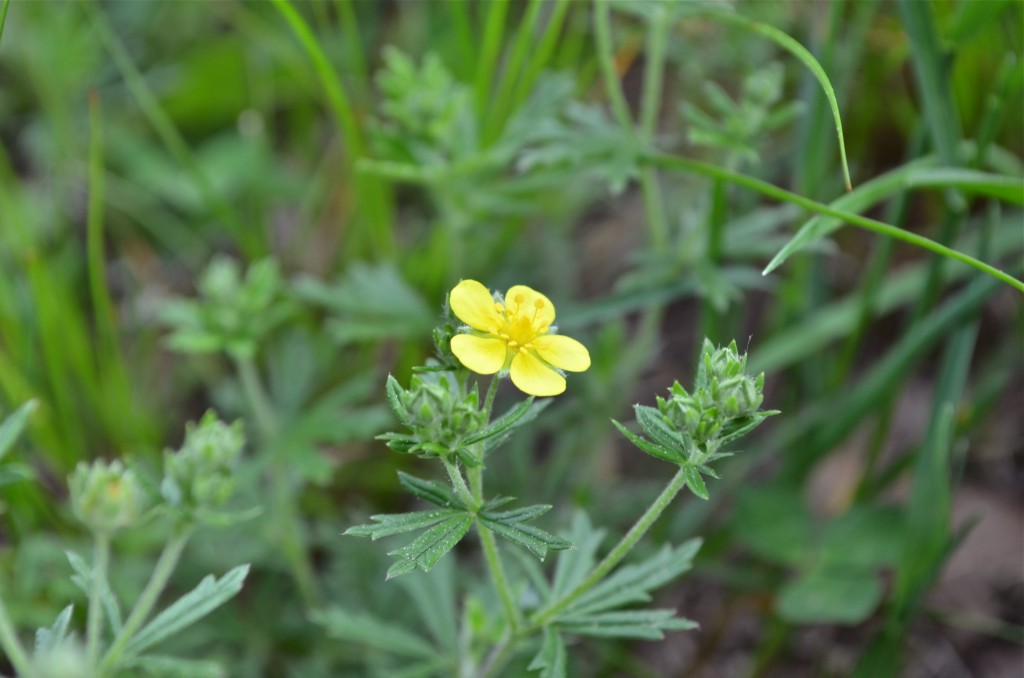 I have already noted Common Cinquefoil growing all over the place— it has leaves similar to wild strawberry. This variety has spiky leaves and is less trailing. The leaves are silvery on the underside. Flowering time June to September, so it’s a little early. Rose family. Origin: Eurasia.
I have already noted Common Cinquefoil growing all over the place— it has leaves similar to wild strawberry. This variety has spiky leaves and is less trailing. The leaves are silvery on the underside. Flowering time June to September, so it’s a little early. Rose family. Origin: Eurasia.